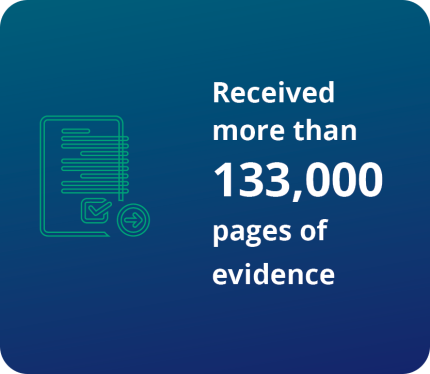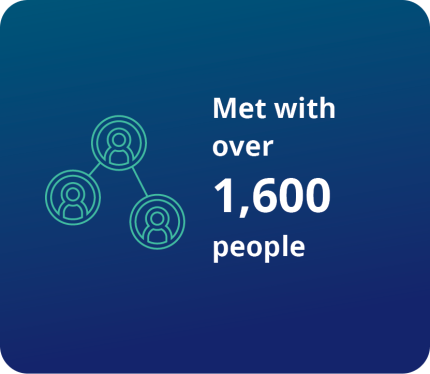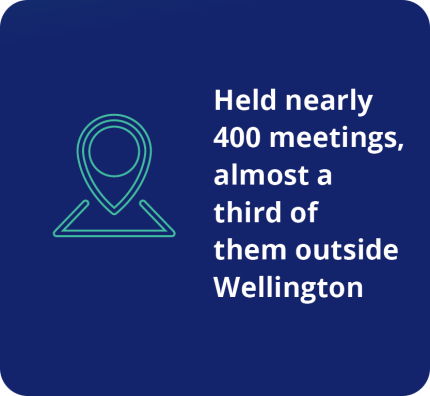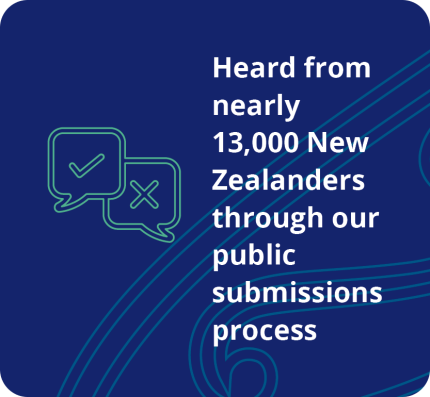3 - Our approach to this inquiry Te huarahi i whāia e mātau
Throughout Phase One, the approach we have taken in our work has been non-adversarial, scenario-focused, exploratory, holistic and forward-looking. It has not sought to duplicate work already undertaken.
Our evidence base has been wide-ranging. We have considered information from many sources, including:
- investigations, reports, reviews and research (domestic and international) and other publicly available information – including Cabinet papers, and minutes of advisory groups and oversight bodies proactively released by government agencies;
- written evidence provided by government departments and other parties;
- additional evidence requested by the Inquiry;
- public submissions; and
- evidence gathered via direct engagements with key stakeholders, decision-makers, public servants, independent experts, and communities most impacted by the pandemic. These engagements took the form of face-to-face or virtual meetings, interviews and correspondence.
More information about how Phase One of the Inquiry was conducted and the approach we adopted, is available in our main report (see Part One, Chapter 3).
Our Phase One reports are the result of work planned and undertaken independently of the terms of reference governing Phase Two of the Inquiry. We were guided by the original terms of reference, and had completed our evidence-gathering and begun drafting our report when Phase Two was established. We consider that the breadth of the work carried out in this initial phase and presented in this report prepares the ground for, and will complement, the next phase of the Inquiry. Phase Two will look deeper into some of the same areas and also address the issue of vaccine safety and harm, excluded from the scope of Phase One.
Evidence snapshot
Phase One of the Inquiry received evidence and information from across the length and breadth of Aotearoa New Zealand.




The views, suggestions and evidence provided by these people and groups have been incorporated into our assessment of the overall COVID-19 response and helped us to identify key lessons for the future.

